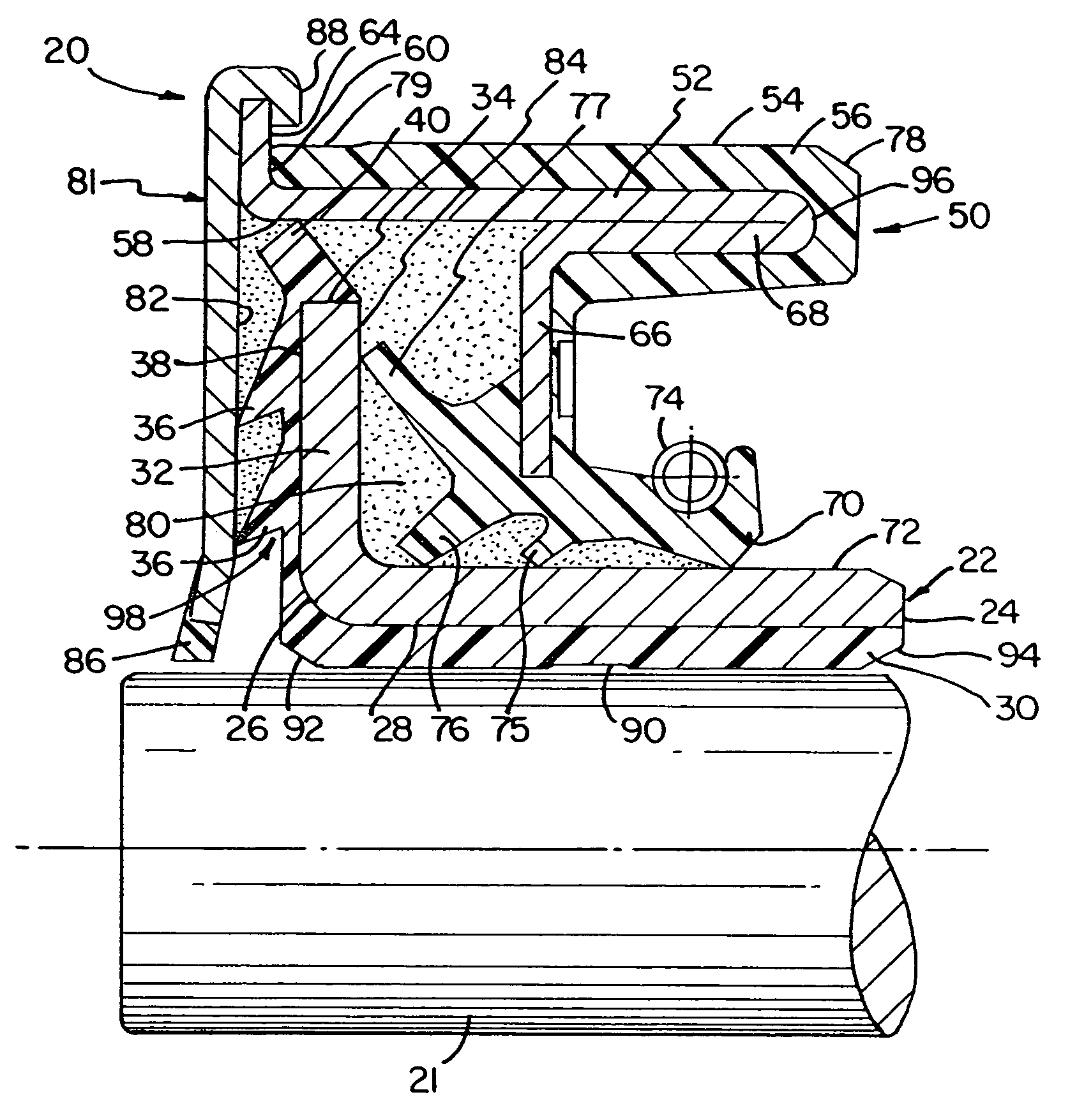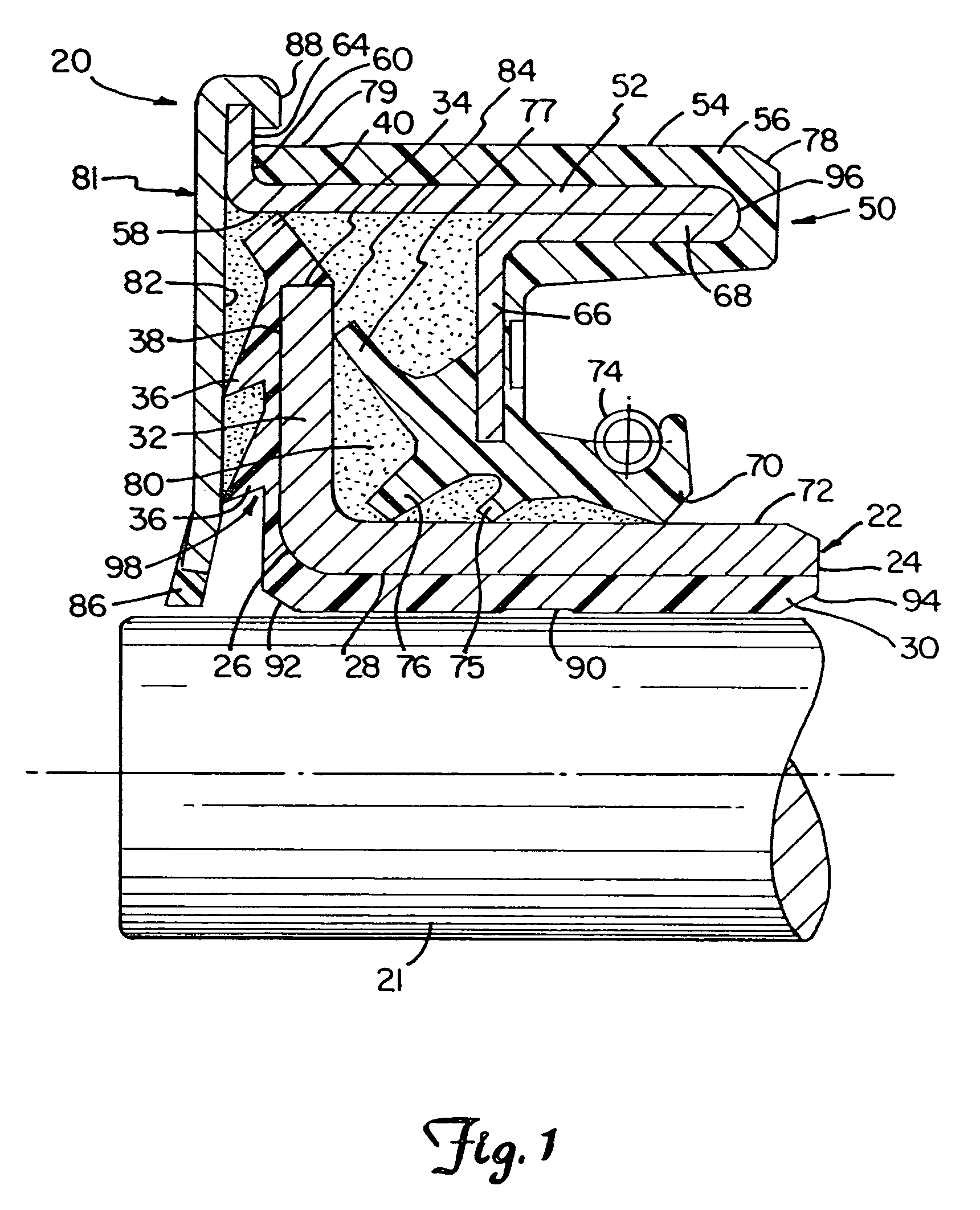Retrofittable severe duty seal for a shaft
a shaft and severe duty technology, applied in the direction of engine seals, mechanical devices, engine components, etc., can solve the problems of large size, significant added cost, and restricted use, and achieve the effect of useful operation characteristics
- Summary
- Abstract
- Description
- Claims
- Application Information
AI Technical Summary
Benefits of technology
Problems solved by technology
Method used
Image
Examples
Embodiment Construction
[0042]Referring now to the various figures of the accompanying drawing, FIG. 1 depicts a cross-sectional profile of an embodiment of the retrofittable severe duty seal 20 fitted onto a shaft 21. A cylindrical sleeve 22 is disposed coaxially over the shaft. The sleeve inner end 24 extends into the sealed region, normally a housing or containment for oil or grease for lubricating gears or bearings. To simplify nomenclature in this specification, the side or end or surface of a component that is oriented toward the lubricants, lubricated components, or other media from which it is desired to exclude dust, water, mud, and other environmental contaminants may be referred to using the terms“inner,”“inward,”“inside,” and similar terms. The words “outer,”“outward,”“outside” and similar terms may be used to refer to the side, or end or surface of a component that is oriented away from the sealed region, toward the exterior of a housing, or toward the unsealed overall environment into which a...
PUM
 Login to View More
Login to View More Abstract
Description
Claims
Application Information
 Login to View More
Login to View More - R&D
- Intellectual Property
- Life Sciences
- Materials
- Tech Scout
- Unparalleled Data Quality
- Higher Quality Content
- 60% Fewer Hallucinations
Browse by: Latest US Patents, China's latest patents, Technical Efficacy Thesaurus, Application Domain, Technology Topic, Popular Technical Reports.
© 2025 PatSnap. All rights reserved.Legal|Privacy policy|Modern Slavery Act Transparency Statement|Sitemap|About US| Contact US: help@patsnap.com



